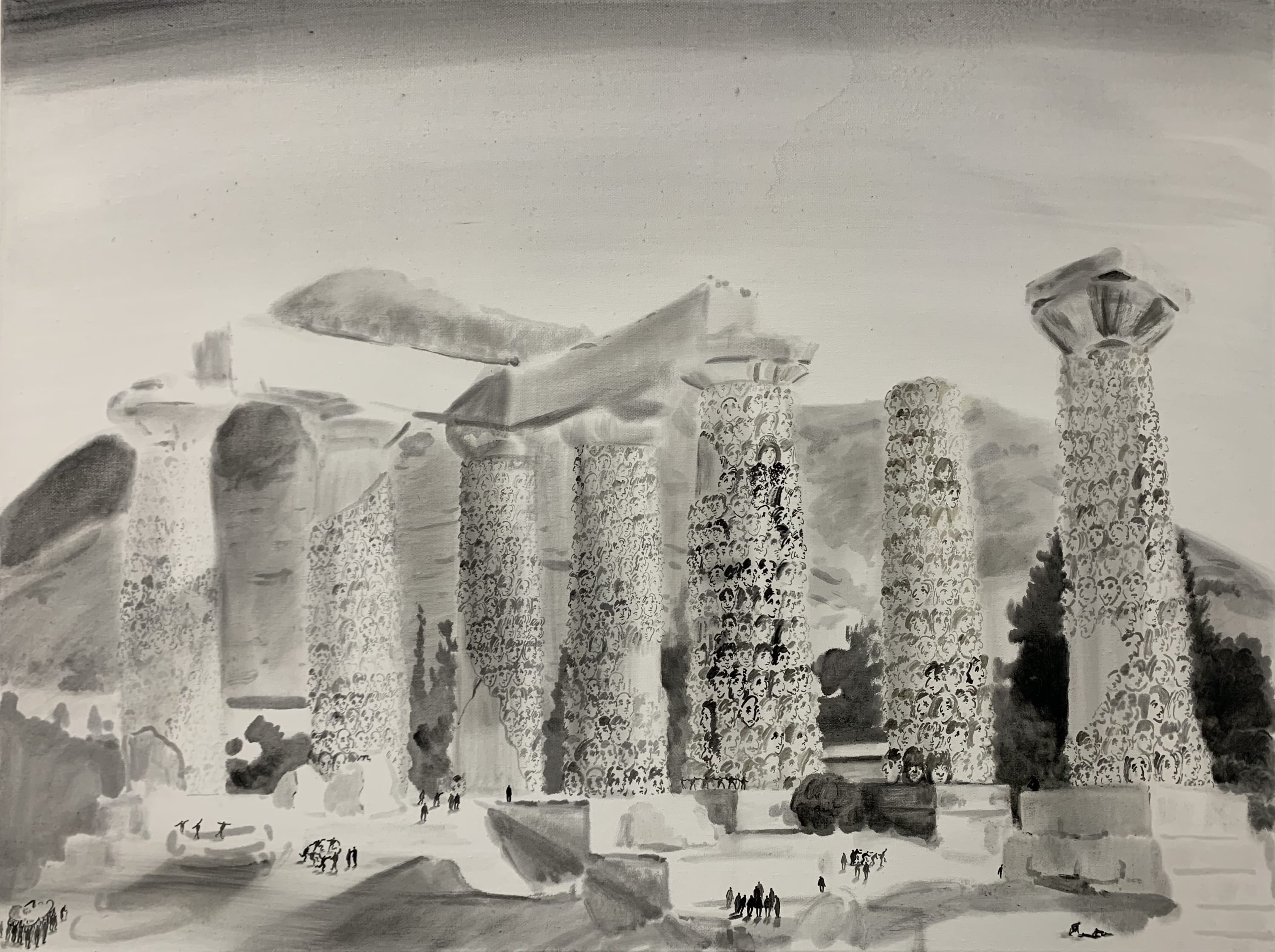-
inspirations from the ancients
-
gallery rosenfeld is proud to present ‘inspirations from the ancients’. The exhibition will focus on six artists whose practice is heavily influenced by five equally rich artistic traditions.
Notwithstanding the endless search for novelty in the contemporary art world culminating recently in the NFT mania, there are various serious, dedicated, artists who both acknowledge their debt to a distinguished earlier artistic culture and, even more impressively, utilise it as an inspiration to make contemporary artwork thereby also renewing and reinvigorating the link between the past and the present.
-
-
The Romanian artist Teodora Axente’s highly ornate paintings bear a clear debt to the Dutch fifteenth and sixteenth century panel painting tradition. Renowned for their exquisite detailing and complex pictorial structures, Axente has taken all this on but also given her portraits a surreal, psychological tension, where characters appear to be human beings but actually, mysteriously, become animals, or have animals growing out of them. Contemporaneously, the artist draws on an endless wealth of precious objects covering a variety of materials and epochs, carpets, paintings and sculptures to add further references and richness to the works.
-

-
The Chinese painter Lu Chao’s works are influenced by the master calligraphers of the Yuan Dynasty (1271 - 1368). However, as with the other artist’s in the exhibition, Lu Chao’s ‘homage’ is no slavish adoption of a previous technique, but merely an attention towards the beauty and power of the gesture, although in his own works, at the service of figuration and not abstraction. Moreover, he has eschewed the traditional material of ink or charcoal and is utilising oil in their place. Chao’s paintings have a genuine concept behind them, whether it be the human beings slavish obedience to power or the existential idea of us being completely alone in the universe. In ‘Relic No7’ he is quoting directly from the ancient world but in the service of his own ends.
-
Qingzhen Han will be the other Chinese artist in the exhibition and although her practice is heavily influenced in a similar way to Lu Chao, her works embrace abstraction. Whereas Lu Chao’s works almost exclusively in black and white, Han has highly delicate, but an extremely rich colour palette to her works. Heavily influenced by Zen Buddhism, each individual gesture has a significance in the general architecture of the whole, as does the concept of space within the work. Often working the extremities of the surface and allowing empty space in the middle of the painting, in a stark reversal of conventional practice.
Initially, Han applies a layer of white ‘gesso’ to the canvas which then, apart from the resultant light which emanates from the blank canvas, encourages us to accept that empty space is actually a metaphysical concept. Furthermore, fundamentally to the ideas she wishes to express, she can subsequently apply paint to various depths of the work as some gestures can almost disappear into the gesso, whilst others remain far more pronounced.
-
-

Keita Miyazaki
Vanitas: Bird Cage, 2018car light, steel, glass, paper, ceramic, wood, set square, lantern, cigar case, weaving yarn instrument and oil paint
86x62x32cm -

Keita Miyazaki
Vanitas: Battlefield, 2021steel, copper, paper, car light, glass
58x42x28cm
-
-
The Japanese artist Keita Miyazaki has, over the last few years, made a series of ‘Vanitas’ metal cases which began their existence as a ‘homage’ to the seventeenth century Dutch paintings which developed into a renowned tradition in the way these exquisitely made works with their skulls, partially eaten fruit, jewels depicted human vanity in its metaphorical portrayal of the accumulation of wealth and its uselessness as a defence against the fragility of existence. Miyazaki has transformed this tradition into a highly contemporary comment on work, both communal and individual, whilst also making a beautifully crafted metal case to contain a mixture of found and made objects, where many objects also comment on some of the original ‘Vanitas’ ideas.
The original works always featured a ‘divine’ light which pierced the painting from the left whilst Miyazaki utilises a car headlight to give off the light centrally. In this case, apart from referencing the earlier seventeenth century tradition, it simultaneously references the idea of ‘communal’ work which is so central to the artist’s thinking.
-

-
All 6 artists in the exhibition have used an ancient tradition but not just as a way of finding inspiration, but instead as a way of commenting on that same tradition by absorbing it and then giving their works a highly contemporary slant which, contemporaneously, maintains the tradition alive and still today of fundamental relevance.
inspirations from the ancients
Past viewing_room




